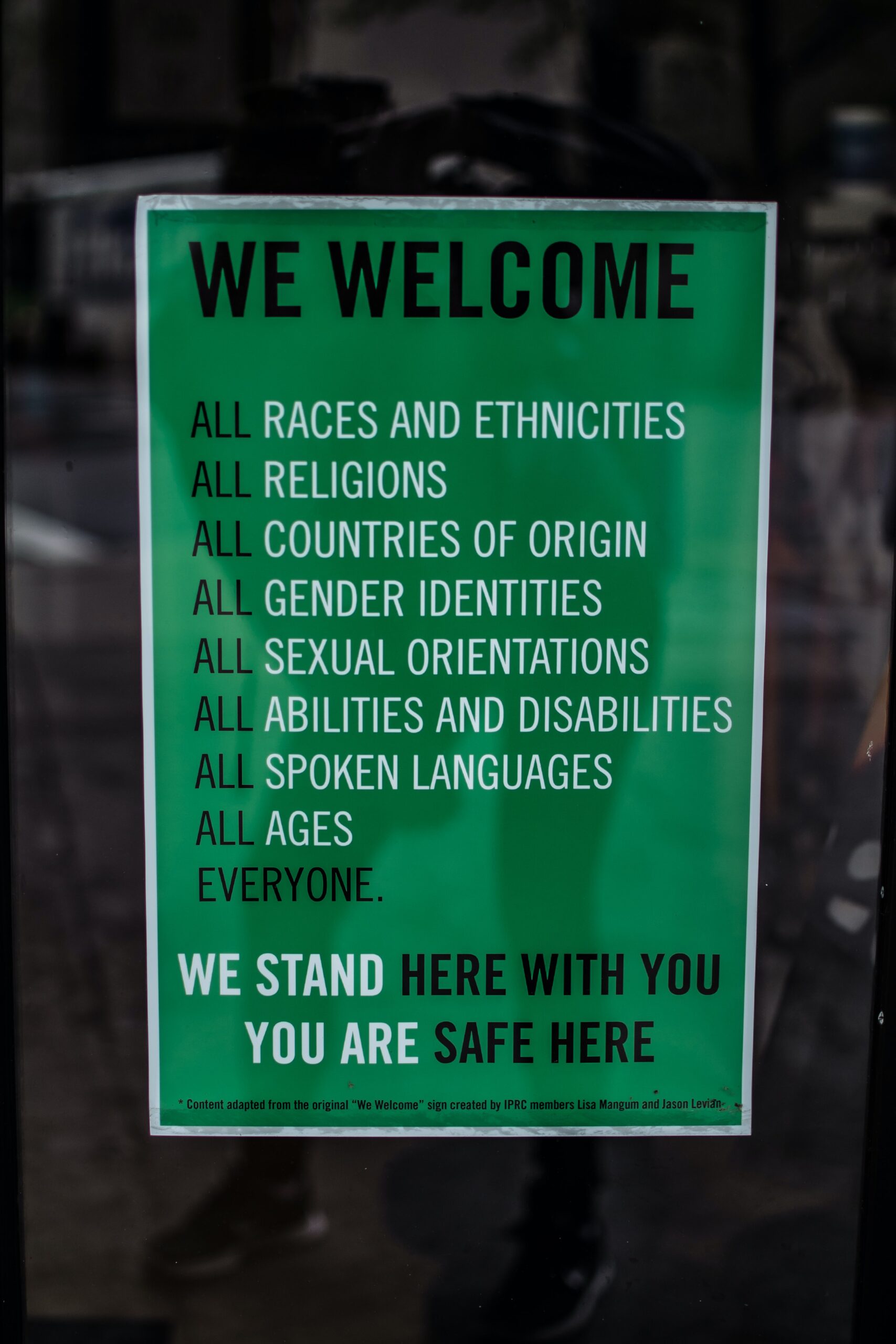In the midst of the Black Lives Matter movement, Merck CEO Ken Frazier publicly stated that “it is the responsibility of corporate America to bridge [opportunity] gaps.”[1] Ken is one of only four Black Fortune 500 CEOs. Together, Black CEOs represent less than 1% of Fortune 500 CEOs despite Black workers making up 13% of the U.S. labor market[2]. Black representation at the highest executive level is just one measure of (in)equity but a prime example of how corporations have failed to deliver more equitable outcomes through diversity and inclusion (D&I) initiatives.
Today, corporate D&I is rooted in “managing diversity and valuing diversity”[3] to improve innovation, collaboration, brand reputation, and other business areas[4] with the ultimate goal of boosting profits. For example, global management consultancy McKinsey & Company reports that “companies in the top quartile for racial and ethnic diversity are 35 percent more likely to [be correlated with having] financial returns above their respective national industry medians”[5]. Sadly, this business case rhetoric for D&I has become a means to an end rather than an end-in-itself. It’s time to try a new framing: firms need to view D&I as an important part of a broader movement to bring more equitable economic opportunities and enshrine human dignity to those who have been historically marginalized. Only by balancing a moral case with the business case can corporate America truly help bridge the gaps of inequality.
Interestingly, the business case hasn’t always been the dominant reason guiding firms to promote D&I. In the 1960s, it was the civil rights movement that prompted nation-wide legislation – such as the 1964 Civil Rights Act and the 1965 Executive Order 11246 – to advance equity and inclusion. Only starting in the 1970s, did firms begin emphasizing training programs that “manage” and “value” diversity. With an era of political conservatism, increasing controversy over affirmative action policies, and a new wave of managers and management consultants, the business case for D&I began to overshadow the importance of institutionalized legal ideas.[6] And so, legal compliance and the moral underpinnings of civil rights law were downplayed[7] as more organizations started to rationalize diversity efforts in terms of “efficiency”, “productivity”, and “profits.”
But why is it problematic for companies to base D&I on the business case? First, the business case hasn’t actually translated to more equitable outcomes. U.S. organizations spend over $8 billion annually[8] on diversity initiatives in hopes of a strong return on investment, but there lacks causal evidence of these initiatives creating a more diverse workforce. From 2003 to 2014, U.S. commercial banks spent millions of dollars on D&I, but representation of Black men dropped from 2.5% to 2.3% and of White women from 39% to 35%.[9]
This trend holds for positions of power. From 2010 to 2018, Black women occupied only 1.5% to 1.7% of senior/executive levels in the private sector[10] despite representing nearly 7% of the labor force.[11] The reality is that many diversity trainings highlight the business case, but doing so can actually trigger more resistance from high-status, White employees who feel threatened and lead them to cast more doubt on minority employees’ competence.[12] Another reason for this diversity stagnation is that D&I initiatives are often designed to prevent lawsuits by policing managers’ behaviors and actions[13] rather than to develop, integrate, empower, and retain staff in the long-run.
Second, framing D&I as a business case allows firms to selectively promote D&I when doing so is commercially convenient. In other words, the business case can shift more easily than formal laws and gives room for firms to turn diversity into whatever firms want it to be.[14] For example, in 2018, fashion giant H&M introduced a pro-LGBTQ+ ‘Love for All’ clothing collection. Yet, it only decided to sell the collection in 20 of its 72 markets – avoiding ones where same-sex relations are banned.[15] While tailoring products by market is important, this market-making tactic allowed H&M to choose where it wanted to be an “ally” and when to adopt D&I values instead of universally committing to pro-LGBTQ+ values .
Lastly, focusing on the business case can render D&I initiatives – and their values – disposable during an economic crisis. In March 2020 when companies closed down or migrated online due to the COVID-19 pandemic, many shifted to firing employees all the while deprioritizing their focus and commitment toward D&I. The unemployment rate for women grew by 0.9%, versus 0.7% for men.[16] Black men saw a 1.2% increase in their unemployment rate, and Hispanics and Asians saw a 1.6% increase, compared to a 0.9% increase for Whites.[17] Despite industry variances, research finds that firms unconsciously and disproportionately laid off these groups because employees from these groups often filled low-authority positions with the shortest tenures.[18]
Relying on the business case to bring more equitable outcomes is simply not enough. Now is the time to try a new framing for why companies need to promote D&I. This can be complementary to the business case and requires the entire business ecosystem.
Senior executives need to commit to embed D&I values permanently and consistently across all business areas – from human resources to product design to supply chain. This can mean adopting affirmative action hiring practices and ensuring that once hired, employees are supported through sustained training and mentorship. This can mean conducting blind résumé screening (to limit bias toward race, age, gender, or social class[19]) and conducting hiring audits to compare the percentage of racialized versus non-racialized applicants who made the first cut. This can mean priming consumers to agree to non-discrimination policies and de-biasing products and services (e.g., AirBnb modifying its reservation process to curb discrimination[20]). This can mean implementing policies to diversify a company’s supply chain to empower businesses owned by women, racialized people, or other groups. In short, D&I needs to be designed and embedded in all business areas.
Other members of the business ecosystem have important roles too. Business schools and executive training programs need to teach managers to foster a psychologically safe workplace[21] so that staff can contribute, value each other’s perspectives, and develop a sense of belonging. Managers need to focus on investing in staff inclusion and empowerment in addition to diversity representation. Human resources need to create nudges and incentives (e.g., tying the quality of a manager’s mentorship to compensation) to shift managerial behaviors. Consumers need to assess whether they want to purchase from a company based on its D&I commitments. There are many more D&I solutions but what is essential is a new framing and moral commitment from the entire business ecosystem that shifts away from profiteering off of D&I.
It’s true that some firms have embedded D&I values in their recruiting initiatives and other business areas, but these efforts are piecemeal and not sustained. Promoting D&I shouldn’t be voluntary but rather necessary and principled. Firms shouldn’t cherry-pick when and where to apply D&I efforts based on the flawed business case. Rather, they need to view D&I as a moral responsibility. Only through this framing can firms better contribute to creating a more equitable and inclusive society.
[1] https://www.cnn.com/2020/06/01/business/black-ceos-george-floyd/index.html
[2] https://www.bls.gov/careeroutlook/2018/article/blacks-in-the-labor-force.htm?view_full
[3] According to Edelman et al. (2001), this means management professionals in organizations embracing diversity in order to thrive in the modern world and managing various cultural styles and backgrounds of a modern workforce.
[4] https://drive.google.com/file/d/1g7Al1vaxXCZDL27M6TLo3Q6L1iW1A0ii/view
[5] https://www.mckinsey.com/business-functions/organization/our-insights/why-diversity-matters
[6] https://www.researchgate.net/publication/238407416_Diversity_Rhetoric_and_the_Managerialization_of_Law
[7] https://scholarship.law.georgetown.edu/cgi/viewcontent.cgi?article=2979&context=facpub
[8] https://www.mckinsey.com/featured-insights/gender-equality/focusing-on-what-works-for-workplace-diversity
[9] https://hbr.org/2016/07/why-diversity-programs-fail
[10] https://www.eeoc.gov/statistics/employment/jobpatterns/eeo1/2018
[11] https://www.bls.gov/opub/ted/2019/black-women-made-up-53-percent-of-the-black-labor-force-in-2018.htm
[12] https://scholarship.law.georgetown.edu/cgi/viewcontent.cgi?article=2979&context=facpub
[13] https://hbr.org/2016/07/why-diversity-programs-fail
[14] https://journals.sagepub.com/doi/10.1177/0361684318800264
[15] https://www.reuters.com/article/us-britain-lgbt-business-idUSKCN1T80VS
[16] https://hbr.org/2020/04/research-u-s-unemployment-rising-faster-for-women-and-people-of-color
[17] https://hbr.org/2020/04/research-u-s-unemployment-rising-faster-for-women-and-people-of-color
[18] https://hbr.org/2020/04/research-u-s-unemployment-rising-faster-for-women-and-people-of-color
[19] https://hbswk.hbs.edu/item/minorities-who-whiten-job-resumes-get-more-interviews
[20] https://www.theatlantic.com/business/archive/2016/09/airbnb-racism/499208/
[21] https://hbr.org/2017/08/high-performing-teams-need-psychological-safety-heres-how-to-create-it
Chu Wang is a Researcher at Harvard University and a consultant for organizations on their diversity, inclusion and equity strategies. Previously, he has worked at the United Nations – Executive Office of the Secretary-General on strategic projects to rescope senior decision-making forums and Boston Consulting Group (BCG) to consult cities on their socioeconomic policies and Fortune 500 companies on their organization design. Chu has a master in public policy from the Harvard Kennedy School of Government. Find him on social media: Twitter handle: “Chuwangworld”; IG handle: “chuwangworld”; linkedin: https://www.linkedin.com/in/chu-wang-harvard/
Edited by: Lucy O’Keefe
Photo by: Brittani Burns

